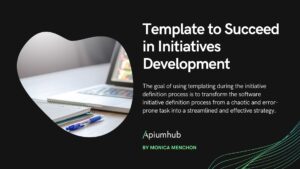Table of Contents
In our article “Stages Of Agile Retrospective & 7 Popular Techniques,” we delve into what a retrospective entails. Retrospectives play a crucial role by providing a space for reflection and evolution. Retrospective dynamics are not merely meetings; they are key components for continuous improvement. However, not all retrospectives are the same, and adapting dynamics to your team’s specific needs can make a significant difference, fostering collective learning and maintaining high motivation.
In this article, we explore various retrospective dynamics, offering practical examples that align with diverse objectives and challenges. Whether you aim to boost creativity, address specific issues, or strengthen team cohesion, you’ll find flexible, personalized tools to enhance your retrospectives. Discover how to design tailored retrospectives that drive positive change and maximize your team’s performance.
The Right Time for Retrospective Dynamics
While Scrum sets retrospective ceremonies at the end of each sprint, we believe it’s beneficial to conduct sessions at key moments throughout the project. We’ll share descriptions of retrospective dynamics tailored to various needs, emphasizing that constant feedback is essential for project success.
Icebreakers
An “icebreaker” is an activity designed to facilitate interaction and communication among individuals who may not know each other well, such as at the beginning of a meeting, event, or training. The primary purpose is to create a more relaxed atmosphere, promote active participation, and break any initial tension or shyness among participants. Icebreakers are often short, fun exercises that allow people to share information about themselves.
Gifs Time
In the “Gifs time” game, each team member selects a GIF from the internet that subjectively illustrates their experience during the last sprint. These gifs are placed on the board, and each participant, in order, explains their choice.
Tell Me Two Truths and a Lie
In “Tell me two truths and a lie,” each participant shares three statements about themselves: two true and one false. The group tries to guess which statement is false, encouraging interaction and revealing interesting aspects about each member.
Desk Object
In the “Desk object” game, each participant selects the first object they find on their desk and shares it with the others. This simple game not only presents the diversity of work environments but also promotes openness and connection through the everyday.
Project Kickoff or Team Onboarding
Retrospectives at the beginning of a project or during the onboarding of a new team member are reflective sessions where past experiences are reviewed, and expectations are set. They facilitate the collective understanding of goals, roles, and processes.
Defining the Team Vision
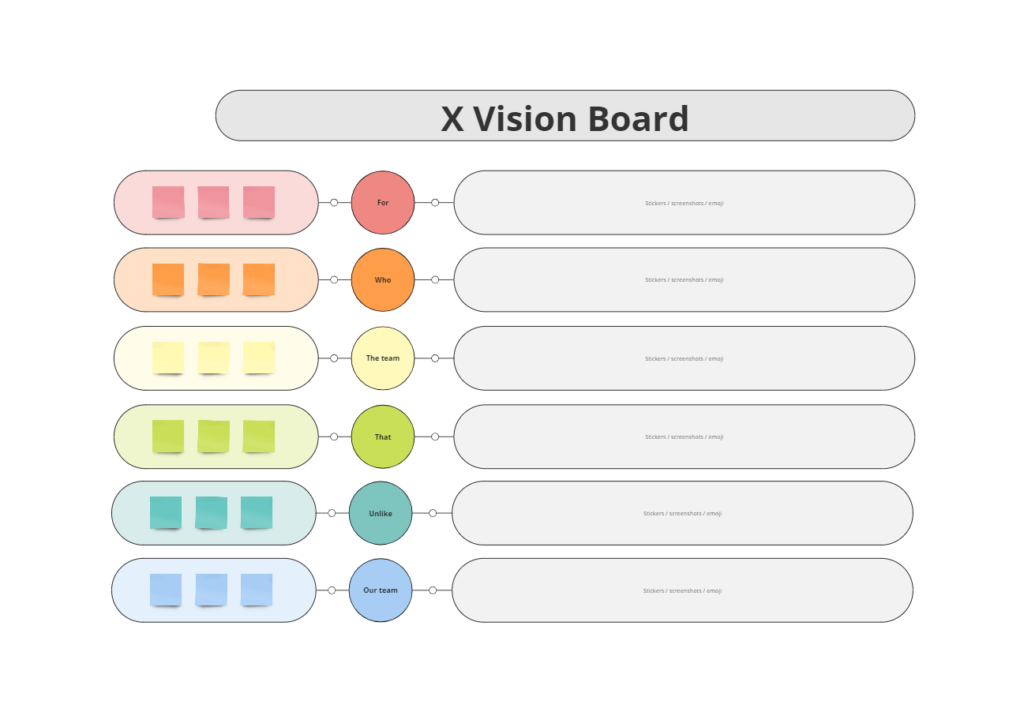
Provide a clear statement summarizing the special role the team plans to play in the organization. Following the template on the whiteboard:
- For (target organization)
- Who (statement of the need or opportunity)
- The (team name, identity) is a (team classification, category)
- That (team singularity, compelling reason for the team’s existence)
- Unlike (current alternative without the team)
- Our team (statement of primary differentiation)
Role Expectations Matrix
This team-building exercise clarifies expectations among team members, helping define roles and preventing potential conflicts arising from unspoken expectations. Instructions:
- Create a list of all the team members’ roles.
- Create a matrix with the list of roles along both horizontal and vertical axes. Label the vertical axis as “from” and the horizontal axis as “to.”
- Ask team members to note their expectations for each role.
- Discuss the entire matrix as a group.
Hopes and Concerns
An effective activity to encourage people to express their thoughts and feelings about what lies ahead. In one column, team members write their “hopes,” and in another, their “concerns.” It is discussed as a team.
Premortem
A helpful tool for preparing for a new release or challenge. Participants discuss potential issues and then shift to making a plan to deal with them.
Offboarding a Team Member
The retrospective for offboarding a team member is a reflective meeting after their time with the team. During this session, key experiences and learnings from the collaboration are shared, providing team members with the opportunity to express appreciation, identify areas for improvement, and reflect on the departing colleague’s impact. This constructive feedback contributes not only to the outgoing member’s personal development but also helps the team adjust its processes and maintain a healthy work environment.
Hot Air Balloon
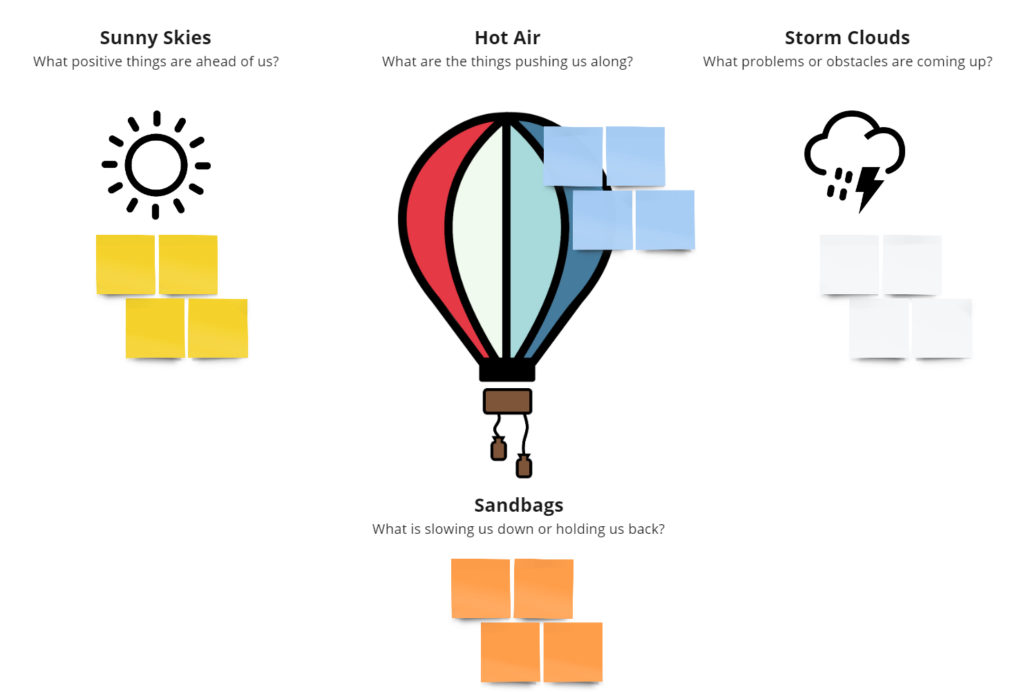
It’s a simple way to help the team identify what speeds them up and what holds them back. In one column, they write areas or activities that strengthen them and help the balloon ascend faster, and in another, the opposite.
Letters to the future
This activity is suitable for times when the team wants to plan and contemplate the future, considering what they anticipate occurring within a specific timeframe. Each team member writes a letter to another team member in the future. The letters are then read and discussed.
Appreciations Wall
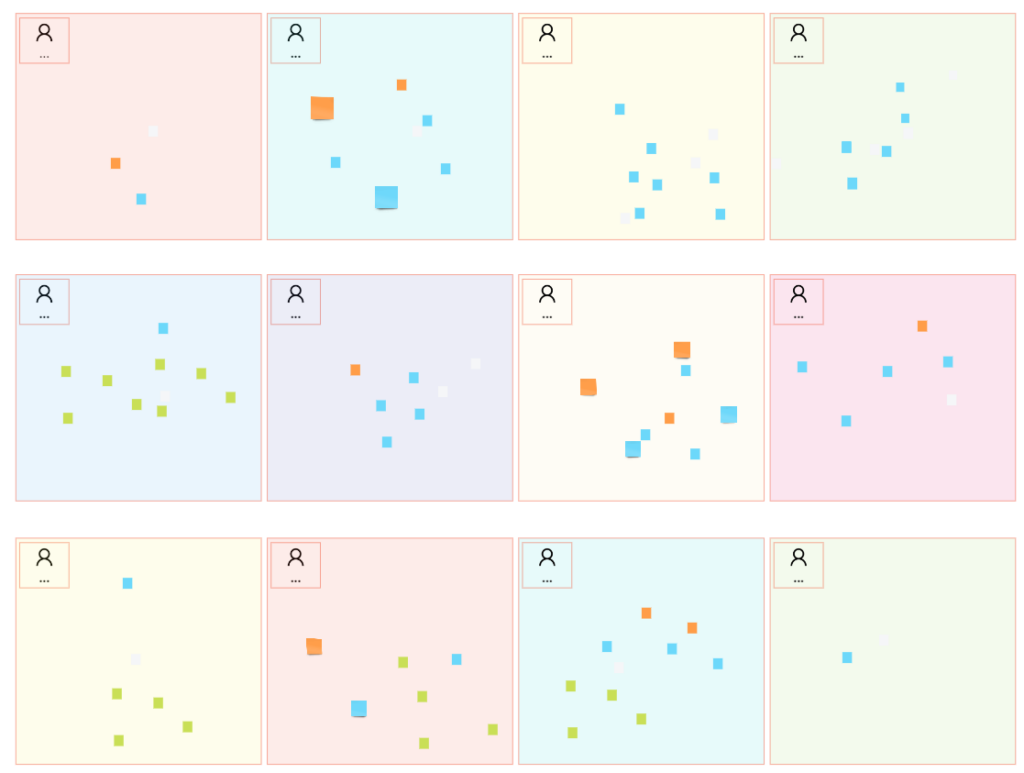
In this exercise, team members are invited to express thanks or recognition for their colleagues’ contributions by writing messages on small cards and placing them on a dedicated mural. This practice fosters a culture of gratitude and appreciation, strengthening bonds and promoting a positive atmosphere within the team.
Focus on Teambuilding
The retrospective aimed at fostering team building is a meeting designed to strengthen cohesion and collaboration within the team. The goal is to create an open space where colleagues get to know each other better, celebrate joint successes, and address challenges constructively.
The Roles We Play
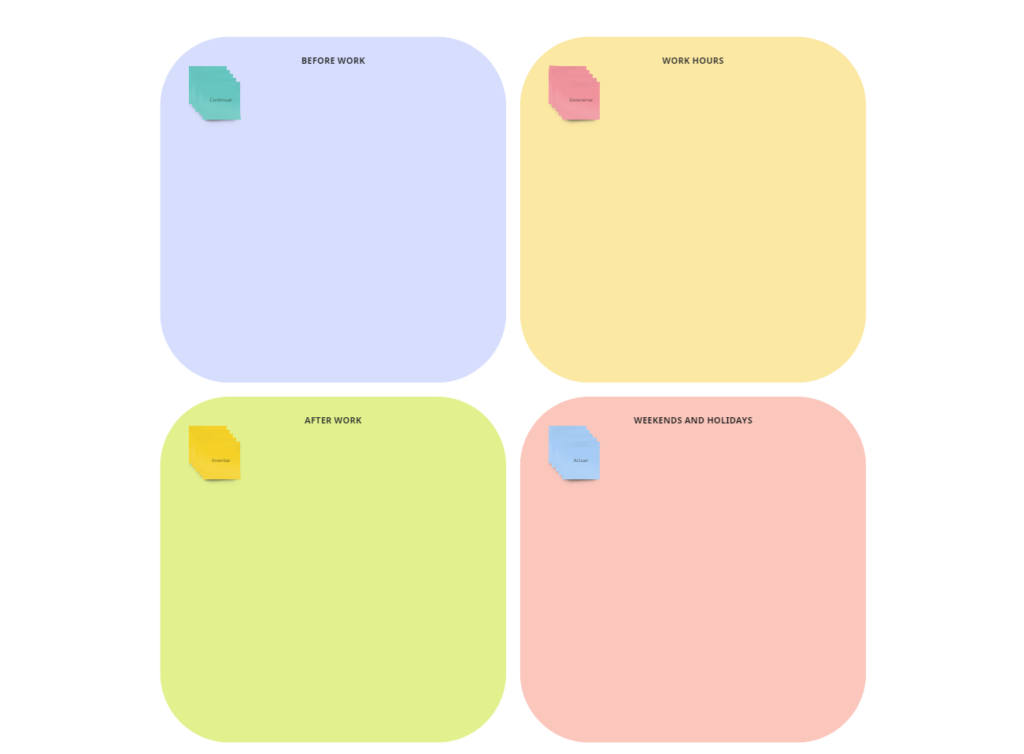
This team-building activity initiates conversations about the various roles we fulfill in our lives. It is especially beneficial for diverse groups that are just beginning to collaborate, acting as a catalyst for stronger bonds. Participants share the multiple roles they play beyond their official job descriptions, including roles before, during, and after work, as well as during vacations.
My First Job
The “My First Job” is one of the retrospective dynamics that involve participants sharing details about their first job, including the position, responsibilities, and experiences. This activity fosters the building of personal connections within the team by revealing aspects of each member’s career path, promoting mutual understanding, and strengthening group cohesion.
Desert Island Scenario
Team members are asked to imagine being stranded on a deserted island, each with an unusual and creative object found in their backpack. They then share how they would use their object to survive or improve life on the island. This activity not only stimulates creativity but also allows team members to get to know each other in a unique and fun way, promoting out-of-the-box thinking and strengthening bonds among participants.
End of a milestone, MVP, release…
A retrospective dynamic at the end of a milestone, MVP, release, or another milestone is a strategic meeting to reflect on the achievements and challenges during that specific period. In this meeting, the team evaluates performance, identifies what worked well, and areas that need improvement, and celebrates the successes achieved. Additionally, goals and actions are established for future iterations.
3Ls
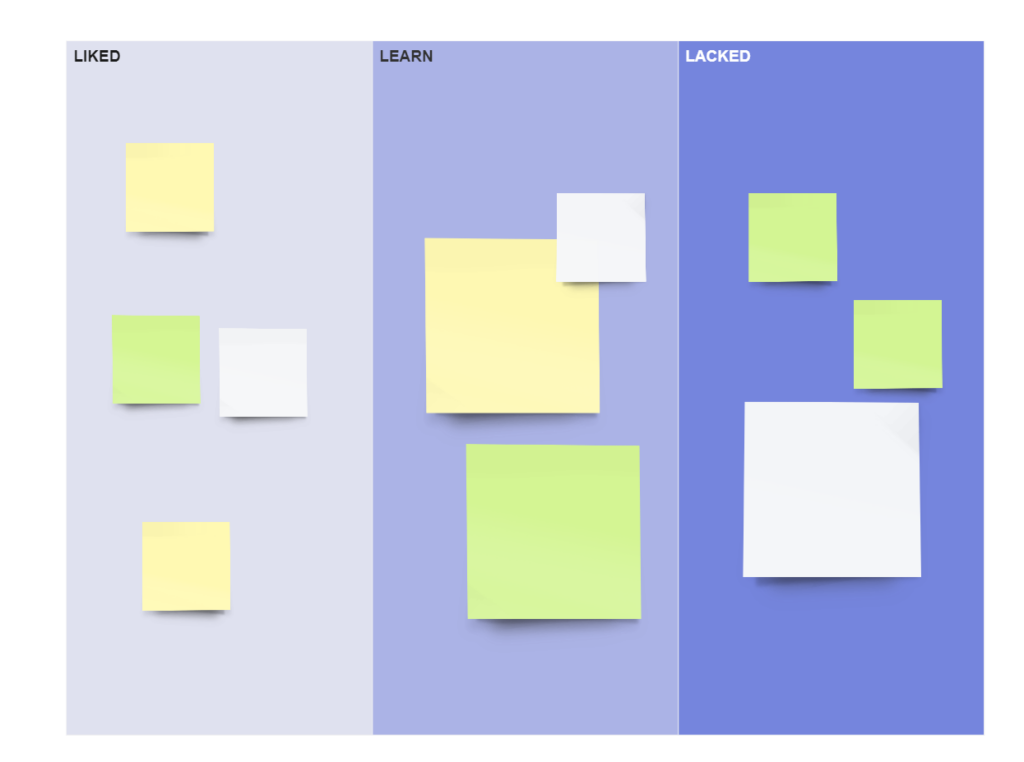
This dynamic involves participants sharing three aspects in a retrospective: what they liked (Liked), what they learned (Learned), and what they felt was lacking or absent (Lacked) during a specific period, project, or experience. It provides a clear structure for reflection, highlighting the positive, educational, and areas for improvement.
Now-Next-Later
This activity is a great tool for teams looking to improve how they communicate priorities and timeframes. It simplifies roadmap planning by focusing on prioritizing impactful opportunities rather than strict calendars, providing a clear view of what’s coming up.
FLAT
The FLAT dynamic, or “Feeling, Learning, Action, Thanks,” is one of the retrospective dynamics that allows participants to share their feelings, what they have learned, actions to take, and express thanks at the end of a project or specific period.

Conclusion
In this journey, we’ve explored different retrospective dynamics designed to address key moments in a team’s life, from project initiation to the delivery of a significant milestone. Each one of these retrospective dynamics, carefully customized to its context, seeks to strengthen collaboration, encourage effective communication, and nurture group cohesion. From the innovative “Gifs time” for sprint analysis to the thoughtful “Letters to the Future” for planning, these retrospective dynamics offer creative and practical approaches to continuous improvement.
Each dynamic acts as an essential pillar, constructing a path where achievements are celebrated, lessons are learned, and continuous improvement becomes the compass guiding the team toward success.

